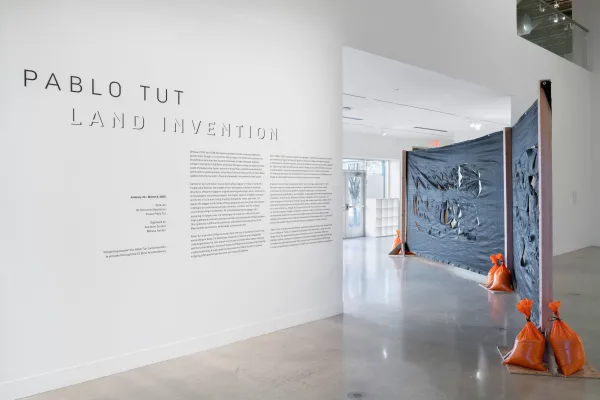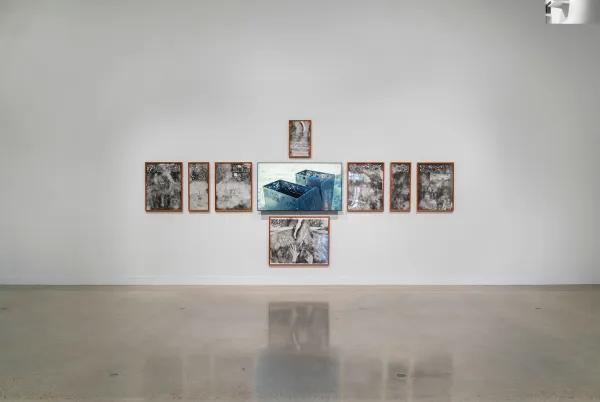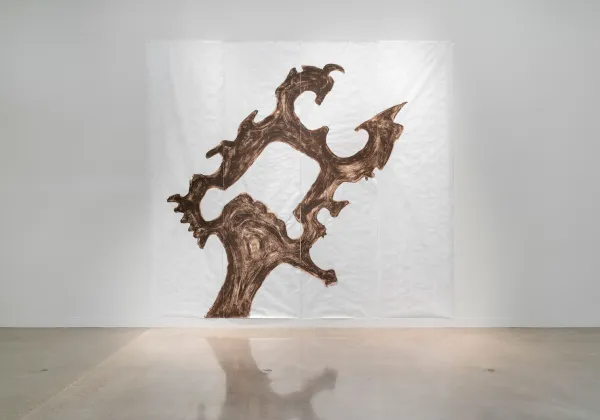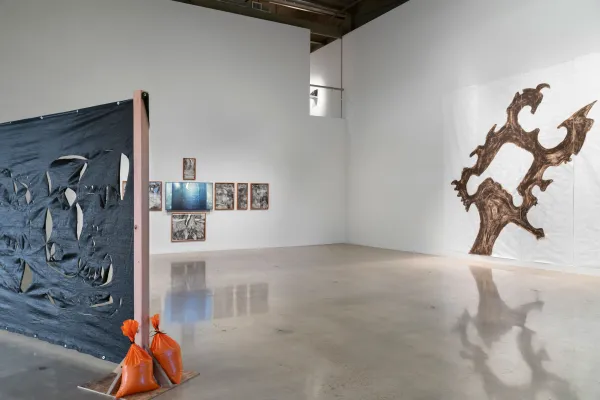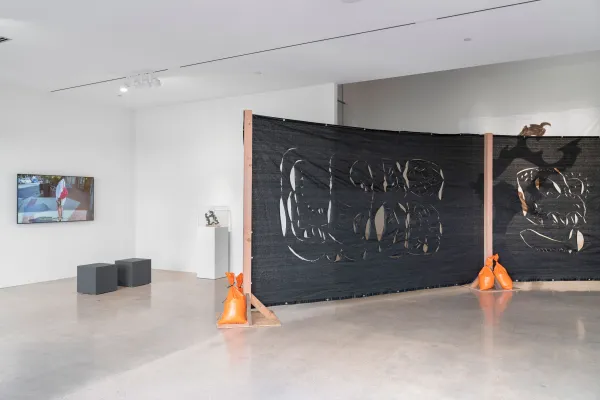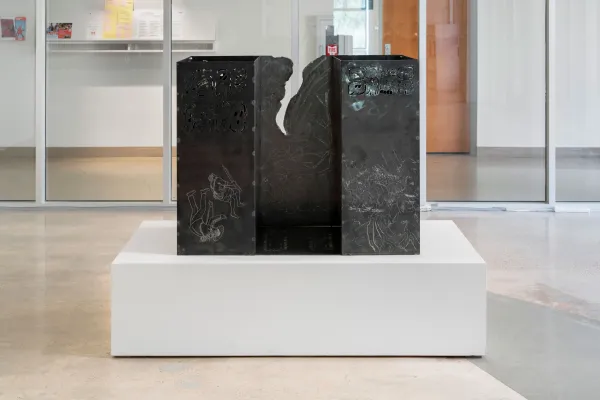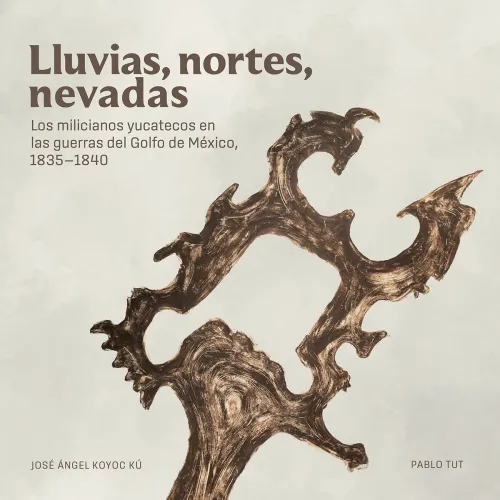Pablo Tut: Land Invention
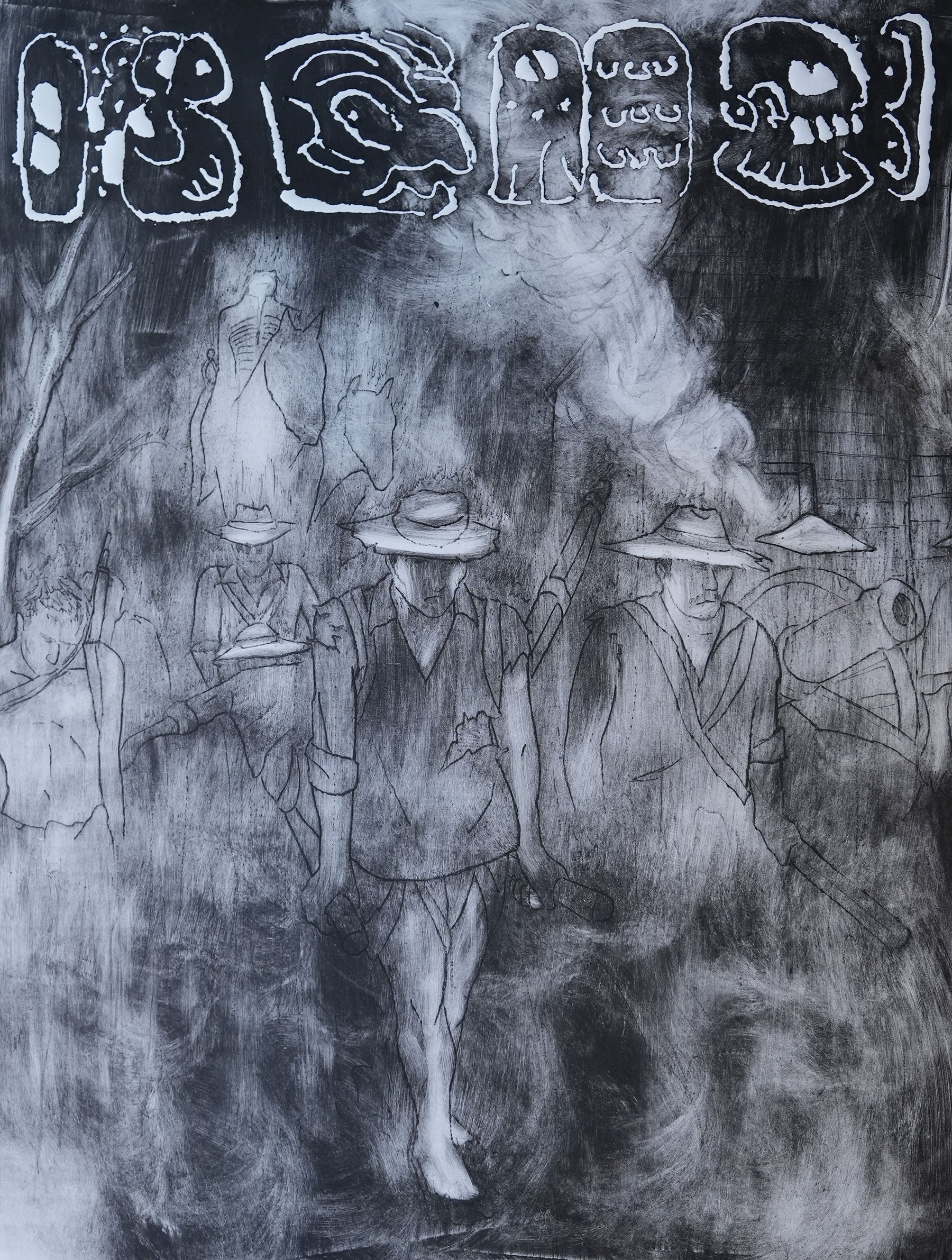
Pablo Tut and José Ángel Koyoc Kú, Monument for the Maya people at Refugio, Texas (detail), 2024. Lithographs, single-channel video, 6:32 minutes, looped. Courtesy of the artists.
2024–25 St. Elmo Arts Residency Fellow: Pablo Tut
Organized by Assistant Curator Melissa Fandos
Between 1835 and 1836, European colonists and the centralized Mexican government fought to control the Texas region. The Mexican government forced Maya men from the Yucatán Peninsula to fight alongside Mexican soldiers. During the 1836 Battle of Mission Refugio, a village located 150 miles south of present-day Austin, several of these Maya soldiers were killed and laid to rest. In Land Invention, artist Pablo Tut traces the journey of these Maya soldiers from the Yucatán to Texas and presents a monument to their legacy.
Central to Tut’s exhibition is an ancient Maya dagger (711 CE) unearthed in Yucatán that features the profiles of four Maya gods oriented in alternate directions. While the dagger’s original meaning and usage remain unknown to archaeologists and anthropologists, the dagger takes on multiple meanings and forms in Tut's work. Using drawing, lithography, video, and steel, Tut places the dagger in the hands of Maya people across time, from the soldiers in Refugio to contemporary artists, historians, activists, and Tut’s family and friends living in the Yucatán Peninsula. By recontextualizing the dagger and assigning it multiple uses, Tut challenges its status as a relic of the past, forging temporal continuity between ancient and contemporary Maya peoples. This continuity reaffirms the autonomy and political consciousness of the Maya people across time, landscapes, and everyday life.
Tut follows the research of historian and calligrapher José Ángel Koyoc Kú, who examines how two colonial nation states—Mexico and the United States—used and displaced Indigenous peoples while forming a national identity. A publication produced by the VAC is slated for release in Spring 2025 and brings this work and research together.
Entre 1835 y 1836, colonos europeos y el gobierno centralizado mexicano lucharon por controlar la región de Texas. El gobierno mexicano obligó a hombres mayas de la Península de Yucatán a luchar junto a los soldados mexicanos. Durante la batalla de 1836 en la misión de Refugio, un pueblo situado a unos 240 kilómetros al sur de la actual Austin, varios de estos soldados mayas murieron y fueron enterrados. En Invención de tierra, el artista Pablo Tut recorre el viaje de estos soldados mayas desde Yucatán hasta Texas y presenta un monumento a su legado.
El elemento central de la exposición de Tut es una antigua daga maya (711 d.C.) desenterrada en Yucatán que muestra los perfiles de cuatro dioses mayas orientados en direcciones alternas. Aunque arqueólogos y antropólogos desconocen su significado y uso originales, la daga adquiere múltiples significados y formas en la obra de Tut. Mediante el dibujo, la litografía, el vídeo y el acero, Tut pone la daga en manos de los mayas a través del tiempo, desde los soldados de la batalla de Refugio hasta los artistas, historiadores y activistas contemporáneos, así como la familia y amigos de Tut que viven en la Península de Yucatán. Al recontextualizar la daga y asignarle múltiples usos, Tut desafía su condición de reliquia del pasado y forja una continuidad temporal entre los pueblos mayas antiguos y contemporáneos. Esta continuidad reafirma la autonomía y la conciencia política del pueblo maya a través del tiempo, los paisajes y la vida cotidiana.
Pablo Tut es un artista de ascendencia maya de la ciudad de Campeche. Actualmente vive y trabaja en Texas. Tut sigue la investigación del historiador y calígrafo José Ángel Koyoc Kú, quien examina cómo dos Estados nación coloniales —México y Estados Unidos— utilizaron y desplazaron a personas indígenas al mismo tiempo que formaban una identidad nacional. Está previsto que en la primavera del 2025 salga a la luz una publicación realizada por el VAC que reúne este trabajo e investigación.
Presenting support for Pablo Tut: Land Invention is provided through the St. Elmo Arts Residency.
Artist
Pablo Tut is the 2024–25 St. Elmo Arts Residency Fellow at the University of Texas at Austin. Tut is an artist of Maya ancestry from the city of Campeche. In addition to working across mediums as an artist, Tut is an educator, curator, and cultural manager. His art practice considers the experimentation of different media, the use of public space, and national and religious themes to expand working-class and Indigenous agency. His artwork functions as deviations, distortions, and reimaginations that resist assimilation into white colonial culture and values. Tut has exhibited in group and solo exhibitions across Mexico and the U.S., including most recently at Stanford Art Gallery in California. Tut was awarded a scholarship for art studies in 2022 and the 2021 patronage program by the Fundación Jumex Arte Contemporáneo. He was selected by the 2020 and 2021 patronage program of Patronato de Arte Contemporáneo, and is the founding member of the independent spaces TARA Cultura Compartida (2017–2018) and Cachorra (2021) in Yucatán. Tut earned his BA in Fine Arts from Escuela Superior de Artes de Yucatán (2015) and an MFA in Art Practice from Stanford University (2024).





